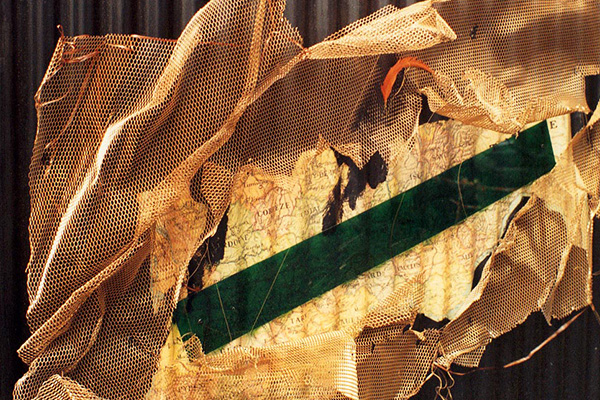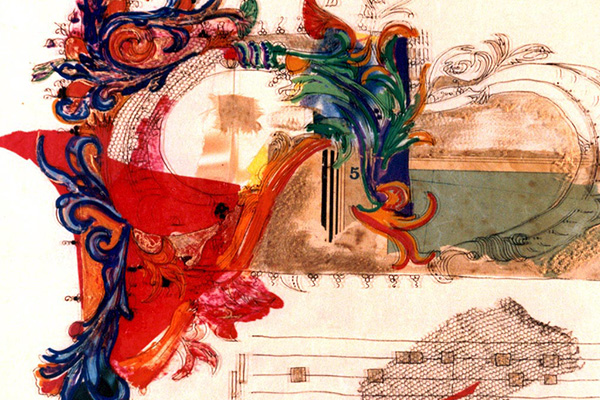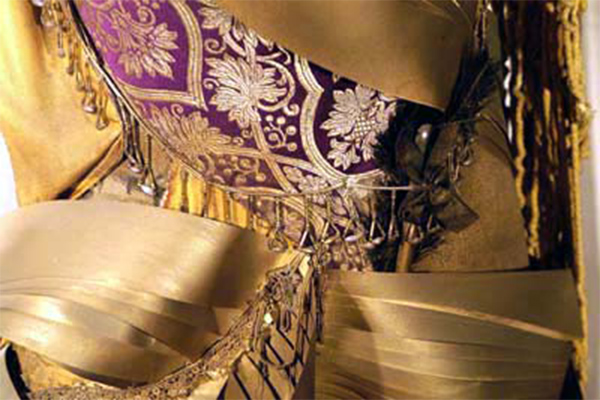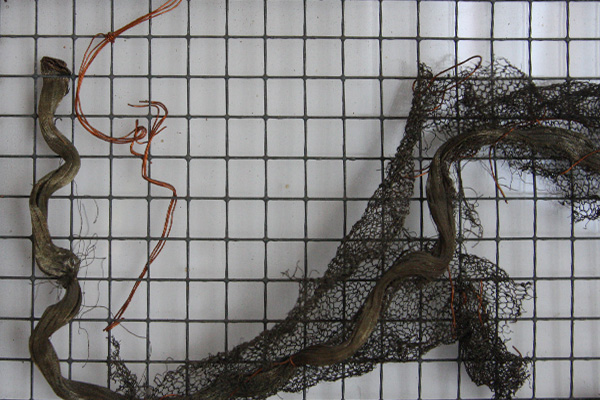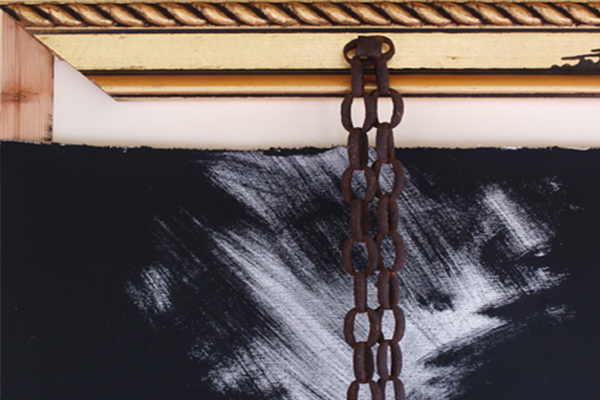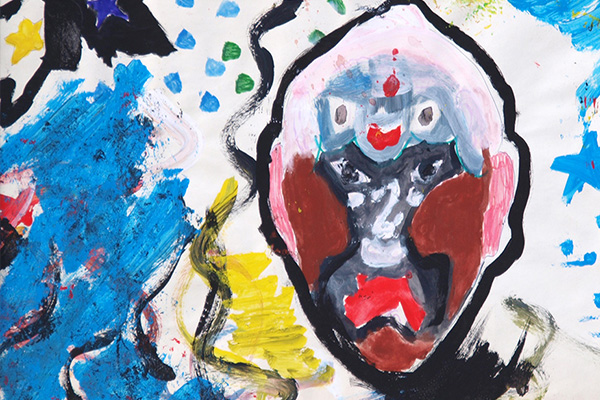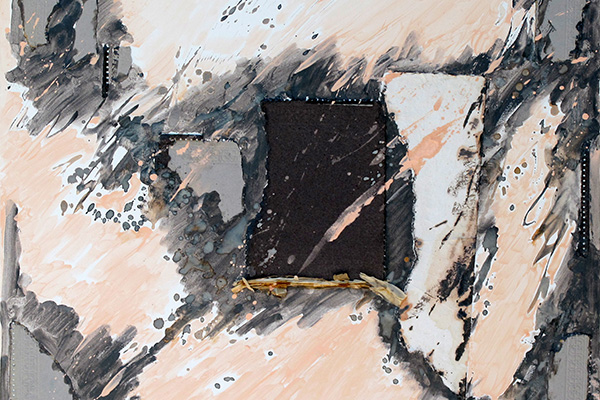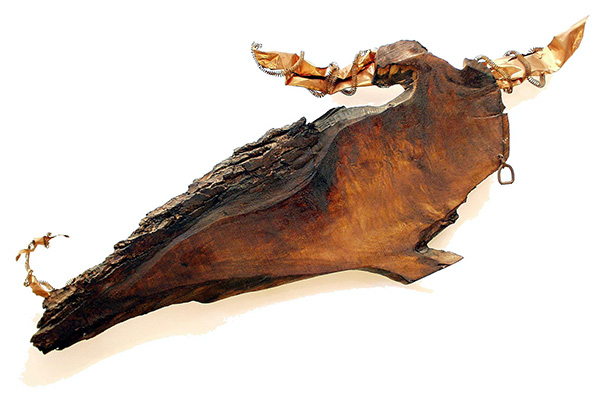Curriculum
La ricerca di Gabriella Porpora parte dalla tradizione per poi superarla attraverso la sperimentazione. La sua formazione accademica le ha permesso di studiare e approfondire l’arte in tutte le sue sfaccettature e allo stesso tempo di cercare e trovare una sua personale dimensione. Dopo un primo periodo figurativo, si indirizza abbastanza rapidamente verso una maniera più vicina al post informale, all’arte povera e all’astrattismo fino a nutrirsi di motivi che provengono dalla Pop Art .
Gabriella è in linea con le nuove tendenze dell’arte contemporanea che vede lo spettatore sempre più coinvolto nell’opera d’Arte.
La sua produzione si concentra su un’arte che rielabora l’espressionismo e le avanguardie del Novecento, e rivolge lo sguardo a un tema o un soggetto, non per sublimarlo esteticamente, ma per farlo rinascere dall’oblio attraverso una significazione critica che va oltre l’apparenza e mira all’essenza.
Artista colta e raffinata, grazie al montaggio di materiali vari e di recupero, costruisce una narrazione allegorica dalle profonde implicazioni esistenziali che guardano all’emancipazione necessaria per superare stereotipi ipocriti!.
La sua opera mira cosi, al recupero dell’azione, del contingente, dell’archetipo come sola possibilità d’arte.
Curatrice Arpinè Sevajan
English version
Gabriella Porpora’s research starts from tradition and then surpasses it through experimentation. Her academic training has allowed her to study and deepen art in all its facets and at the same time to seek and find a personal dimension of her. After an initial figurative period, she moves fairly quickly towards a way closer to the informal post, poor art and abstractionism to the point of nourishing herself with motifs that come from Pop Art.
Gabriella is in line with the new trends of contemporary art which sees the viewer increasingly involved in the work of art.
His production focuses on an art that re-elaborates expressionism and the avant-garde of the twentieth century, and turns its gaze to a theme or a subject, not to sublimate it aesthetically, but to make it be reborn from oblivion through a critical signification that goes beyond appearance and aims at the essence.
She is an educated and refined artist, thanks to the assembly of various and recycled materials, she builds an allegorical narrative with profound existential implications that look to the emancipation necessary to overcome hypocritical stereotypes!
Her work thus aims at recovering the action, the contingent, the archetype as the only possibility of art.
Curator Arpinè Sevajan
Pittrice e scultrice, romana.
Ha seguito e inseguito percorsi sempre diversi: l’essenzialità delle pitture rupestri, il rigore e il simbolismo medioevale, il disegno e l’anatomia rinascimentali , la linea barocca , la ricerca luministica degli impressionisti, quella coloristica dei Fauves, l’atmosfera della Metafisica e del Surrealismo , la spiritualità dell’Astrattismo e la matericità dell’ Informale, alla ricerca di un segno, di un linguaggio e di uno spazio personali.
Questo percorso l’ha portata alla realizzazione di un’espressione artistica che si può definire “picto-scultura” vale a dire pittura su supporto trasparente – il perspex – che a sua volta viene–plasmato col calore. La pittura è realizzata impiegando pigmenti diversi per densità e spessore, associati a materiali eterogenei a valenza simbolica.
L’impiego del colore e dei materiali usati viene esaltato dalla luce che li attraversa creando effetti sempre diversi sulla superficie stessa del quadro, animandolo secondo le differenti ore del giorno con una mutevolezza che lo rende sempre vivo
L’immagine così creata viene proiettata sulla parete producendo a sua volta disegni – ombre .
La trasparenza, elemento essenziale di questa ricerca, è anche desiderio di coinvolgere lo spettatore, in quanto, attraverso lo sguardo, quest’ultimo può “attraversare ” simbolicamente l’opera diventando partecipe non solo dell’operare artistico, ma anche di quello intellettuale, in quanto l’artista offre anche a chi guarda la possibilità di proiettarsi oltre.
La ricerca materica e il desiderio di plasmare l’ha portata per esempio, durante la sua lunga permanenza a Parigi, alla realizzazione di alcuni ”manichini” come nella personale a Parigi intitolata: “Hors le regard”, “Manichini” che intendono veicolare un percorso storico il quale, partendo dal Medioevo arriva all’epoca contemporanea
Le sculture dipinte con vernici speciali trattano temi legati al mito – messi in relazione all’attualità, come per esempio “Il giogo di Pasifae, quello del “Minotauro”, oppure temi come “Ab-Origen”, evidente denuncia della pratica ancora in uso in alcuni paesi africani, della escissione del clitoride – opera esposta al Palazzo delle Esposizioni in occasione del Vertice Internazionale della FAO
Anche gli allestimenti cui ha partecipato esprimono il desiderio di usare l’arte e la ricerca del bello, inteso in senso lato come stile di vita : Oggi vivo in un paesaggio strappato, Follia Urbana, Forum Transitorium, Tazebao dArtista
Il desiderio di ricerca è in divenire, perché questo è il suo modo d’essere.
English version
Born in Rome , G. Porpora received her Diploma at the Accademia di Belle Arti, school of Painting in Rome, under the guidance of Guttuso, Guccione, Montanarini.
Since 1971 she has travelled extensively and has participated in artistic events in Italy and abroad – predominantly in Paris, where she attended the Beaux Arts and received another Diploma following the Courses in Archaeology and Art History of the Sorbone – Paris IV where she resided for ten years
In 1984, on the way back from a short time in Beijng, she came back to Rome, the city in which she is currently residing.
She has participated in the “ D&A annual exhibition “ The Woman and the art”, and worked with the Cultural Association POLISGRAMMA, taking part in the “symbolic rebuilding” of a new model of a modern city with annual exhibitions in some neuralgic points of the town as Termini Station for example.
She primarily constructs her art works amalgamating some different materials of past and present.
The art works principally in Perspex: picto-sculptures treated with burning technique-combining and uniting different qualities of colours for ceramic, glaze, ink and collages.
The interests of this artist are polyvalent, tending to search out not only the beauty, but also the hidden meanings or contents: indeed she often plays with these contents, as a gambler, adding these different materials, – plastics perspex wood metals ( iron, copper etc..), canvas, papers (ancient or modern ),each of them with their specificity, in order to draw out the symbolic meaning within each piece.
“Sometimes we have to look at the objects,” she says , “ stripping them to guess their seduction, but at other times, we have just to add some little details to suggest a world .
Gabriella Porpora believes there exists a fine but very strong knot, between the past and the present and says it is necessary to conserve it in looking at our future; and if you try to find this knot you too can feel amazed emotions.
Polisgramma
Gabriella Porpora è stata una delle fondatrici del gruppo culturale Polisgramma – Gruppo 12 – Building ground Art.
I membri, donne artiste della IAWA – International Association of Women Arts -, fondano il gruppo nel 1986, per sviluppare un progetto di installazione artistica in uno spazio aperto, con il preciso intento di intervenire sul tessuto urbano della città. L’idea iniziale parte dal concetto che la metropoli è un organismo in continua trasformazione e il simbolo di questa trasformazione è la “recinzione metallica” dei cantieri, spesso deturpata da graffiti e manifesti pubblicitari strappati. Il legame con l’arte, che è trasformazione al massimo, è quindi naturale. L’arte non è solo trasformazione di materia prima: colori, supporti, ecc., ma anche materia visiva e materiale linguistico e culturale. Ogni opera d’arte è dunque documentazione di una trasformazione che produce un’altra trasformazione in chi ne beneficia. Di conseguenza, la combinazione di questi due potenti simboli – la “recinzione metallica”, come simbolo della trasformazione fisica dell’habitat, e l’operazione artistica, come simbolo della trasformazione psicologica del cittadino – agisce per valorizzare entrambi.
Nasce Polisgramma: una parola greca composta da “polis” che significa “città” e “gramma”, sostantivo derivante dal verbo “grapho”, che significa: scrivo, stampo, incido, disegno. Quindi Polisgramma è in senso lato “il marchio della città come sintesi di ciò che la città imprime in ognuno di noi”.
Dalla nascita di Polisgramma queste artiste hanno realizzato circa 40 interventi.
English version
Gabriella Porpora was one of the founders of the cultural group Polisgramma – Gruppo 12 – Building ground Art.
The members, women artists of the IAWA – International Association of Women Arts -, founded the group in 1986, to develop an artistic installation project in an open space, with the specific intent of intervening on the urban fabric of the city. The initial idea starts from the concept that the metropolis is an organism in continuous transformation and the symbol of this transformation is the “metal fence” of the construction sites, often defaced by graffiti and torn advertising posters. The link with art, which is transformation to the maximum, is therefore natural. Art is not only the transformation of raw material: colors, supports, etc., but also visual material and linguistic and cultural material. Each work of art is therefore documentation of a transformation that produces another transformation in those who benefit from it. Consequently, the combination of these two powerful symbols – the “metal fence”, as a symbol of the physical transformation of the habitat, and the artistic operation, as a symbol of the psychological transformation of the citizen – acts to enhance both.
Polisgramma is born: a Greek word composed by “polis”, which means “city”, and “gramma”, noun deriving from the verb “grapho”, which means: I write, I print, I engrave, I draw. So Polisgramma is in a broad sense “the brand of the city as a synthesis of what the city imprints in each of us”.
Since the birth of Polisgramma these artists have made about 40 interventions.

